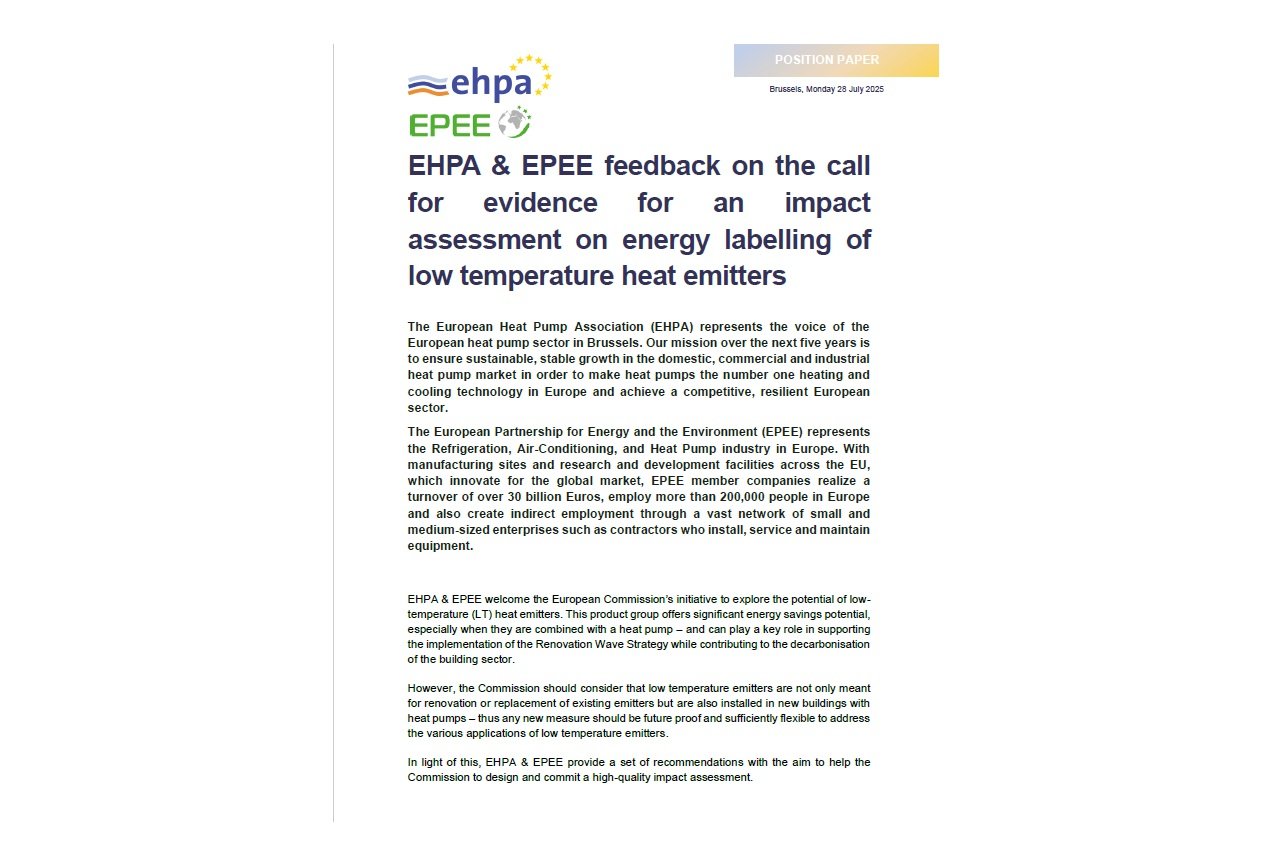The European Heat Pump Association (EHPA) and the European Partnership for Energy and the Environment (EPEE) have issued a joint position paper in response to the European Commission’s call for evidence on the energy labelling of low-temperature (LT) heat emitters. Both organisations support the initiative, highlighting the potential of LT emitters to deliver significant energy savings, particularly when paired with heat pumps, and to contribute to the Renovation Wave Strategy and building sector decarbonisation.
EHPA and EPEE emphasise that LT heat emitters are not limited to renovation scenarios but are also widely used in new buildings equipped with heat pumps. They call for any regulatory framework to be future-proof and adaptable to various use cases.
The associations propose several key recommendations. They urge prioritising all heat pump technologies, including hybrid systems, in the assessment process. They also highlight the importance of recognising the added value of LT emitters in delivering both heating and cooling, noting that current studies often overlook this functionality.
Regarding the scope of the proposed energy labelling, EHPA and EPEE request clarification to avoid regulatory overlaps, particularly with existing Ecodesign rules. They note inconsistencies, such as the inclusion of hydronic fan coil units (covered under Ecodesign Lot 21) and the exclusion of floor and wall units.
They also question the relevance of an energy label for components rarely chosen by end users independently, suggesting instead that performance data could support calculations under the Energy Performance of Buildings Directive (EPBD). A product information sheet could enhance transparency and consistency in energy performance certificates.
To ensure fair comparisons among technologies, EHPA and EPEE recommend a lifecycle-based environmental assessment, including material usage. They caution against simplistic classifications and recommend aligning labelling metrics with EN 15316-2, considering seasonal and dynamic operating conditions.
“A comprehensive approach that integrates system-level performance and supports interoperability with heat pumps is essential,” the paper states, calling for alignment with existing standards and cautioning against inappropriate testing methods.
